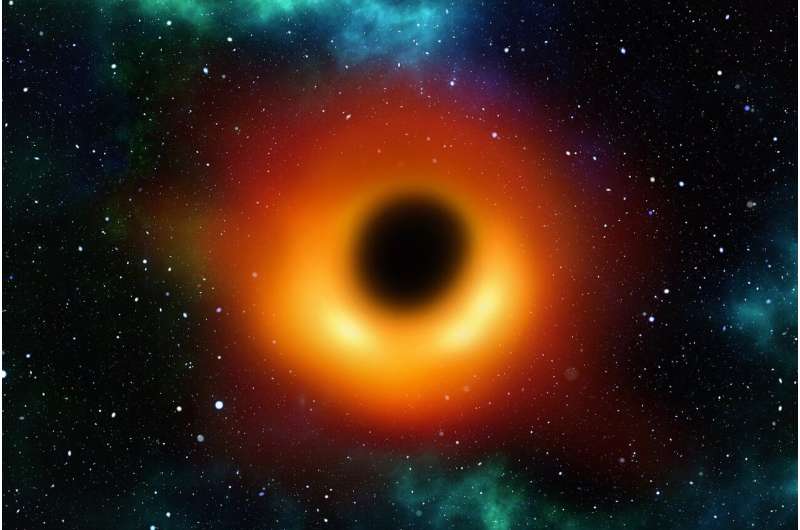Credit: CC0 Public Domain
In 1969, English physicist Roger Penrose discovered a property which would later allow for a long-awaited link between thermodynamics, and the far stranger mechanics of black holes. Through new analysis published in EPJ H, Carla Rodrigues Almeida, based at the University of São Paulo, Brazil, sheds new light on Penrose's motivations and methods, and explores their historical influence on the groundbreaking discovery of Hawking radiation.
Prior to the 1950s, many physicists were reluctant to accept the idea that black holes are physical objects, consistent with the well-established laws of thermodynamics. This picture transformed entirely over the next two decades, and in 1969, Penrose showed for the first time how energy can be extracted from a rotating black hole. His theory hinged on a newly-conceived region named the 'ergosphere.'
Although it lies just outside the boundary of a black hole, spacetime within the ergosphere rotates alongside the body, like the gas in a planet's atmosphere. If a piece of matter enters the region, Penrose proposed that it may split into two parts: one of which can fall into the black hole; while the other can escape, carrying more energy than the original particle.
Over the next few years, Soviet physicist Yakov Zel'doivh explored Penrose's discovery through the lens of quantum mechanics. Although his work was held back by political circumstances, Zel'doiv established friendly collaborations with Western physicists. Ultimately, the theories that emerged through these relationships led to Stephen Hawking's discovery of novel quantum effects, which can cause black holes to radiate mass. Finally, the physics community was convinced that black holes can indeed obey the laws of thermodynamics.
In her study, Almeida investigates Penrose's proposal within this historical context. By revisiting original papers, analyzing technological details, and exploring relationships between Western and Soviet physicists, she aims to uncover the history they hide. The article moves through the chain of reasoning which led from Penrose's proposal, to an analogy between thermodynamics and black hole physics; and ultimately, to the formulation of Hawking radiation.
More information: Carla Rodrigues Almeida, The thermodynamics of black holes: from Penrose process to Hawking radiation, The European Physical Journal H (2021). DOI: 10.1140/epjh/s13129-021-00022-9
Provided by Springer
























